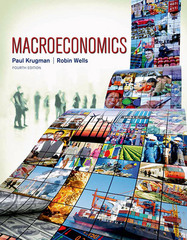Question
1) Suppose the only two goods in the world are sweatpants and t-shirts. The price of a pair of sweatpants is $30 while the price
1) Suppose the only two goods in the world are sweatpants and t-shirts. The price of a pair of sweatpants is $30 while the price of a t-shirt is $10. You have exactly $90.
1.1) On a graph with pair of sweatpants measured along the horizontal axis, draw your budget constraint. Carefully label all intercepts and the slope.
1.2) How does your constraint change if the price of t-shirts increases to $15 per shirt? Draw it in your graph.
1.3) Now suppose you have no money, but you do have 2 pairs of sweatpants and 6 t-shirts. On a separate graph, draw your budget constraint when the price of sweatpants is $30 and the price of t-shirts is $10 (assume you can sell your endowments).
1.4) How does your budget constraint change if the price of sweatpants decreases to $15 per pair? Draw it in your second graph.
2) In the month of September 2020, the Smith family has income from unemployment insurance for $1,005 per month and receives $345 through the Supplemental Nutrition Assistance Program (SNAP). SNAP funds can be spent on groceries only. In a graph measuring dollars spent on groceries along the horizontal axis and dollars spent on other items along the vertical axis, draw the Smiths' budget set.
3) Suppose the only two goods in the world are water bottles and t-shirts. The price of a bottle of water is $1 while the price oftshirts is $12 each or $30 for three shirts. On a graph with t-shirts measured along the horizontal axis, draw the budget constraint of a consumer who has exactly $60.
Step by Step Solution
There are 3 Steps involved in it
Step: 1

Get Instant Access to Expert-Tailored Solutions
See step-by-step solutions with expert insights and AI powered tools for academic success
Step: 2

Step: 3

Ace Your Homework with AI
Get the answers you need in no time with our AI-driven, step-by-step assistance
Get Started


